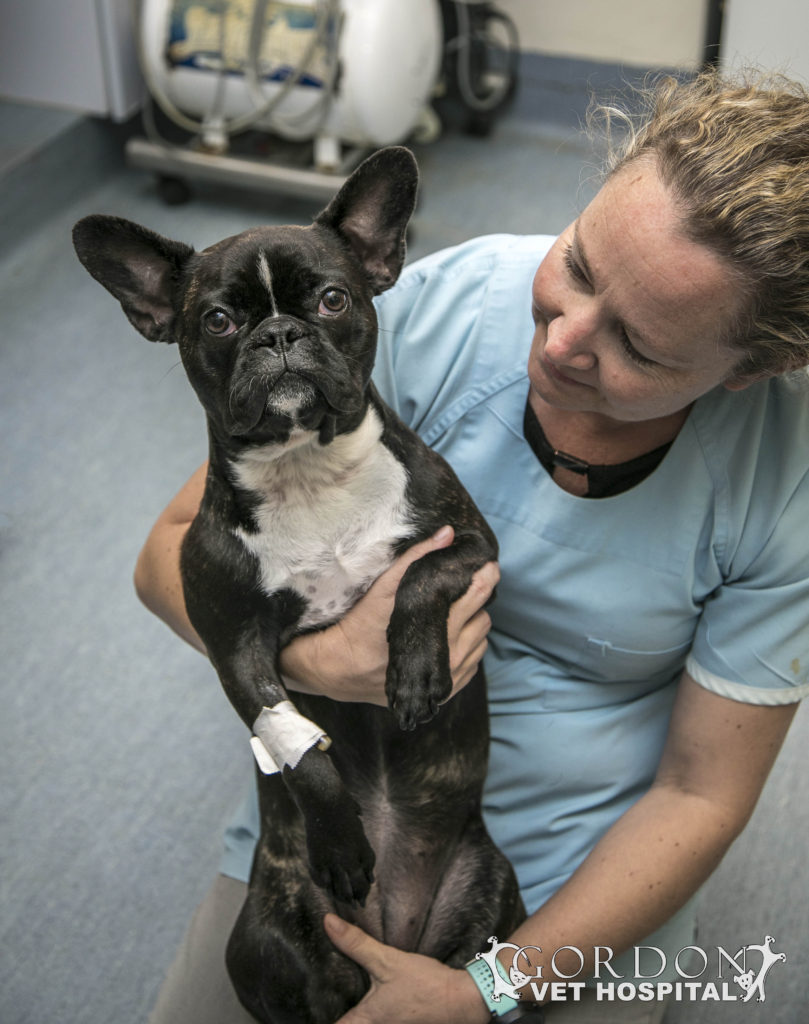Giving Ruby room to breathe…
By John Morgan | Dated March 14, 2018

Ruby, an 11 month old French bulldog came in to Gordon Vet for a check-up on a retained tooth, but her owner also expressed concerns regarding Ruby’s breathing. Ruby had been snorting and open mouth breathing constantly, even when she was just resting and her owner was understandably alarmed.
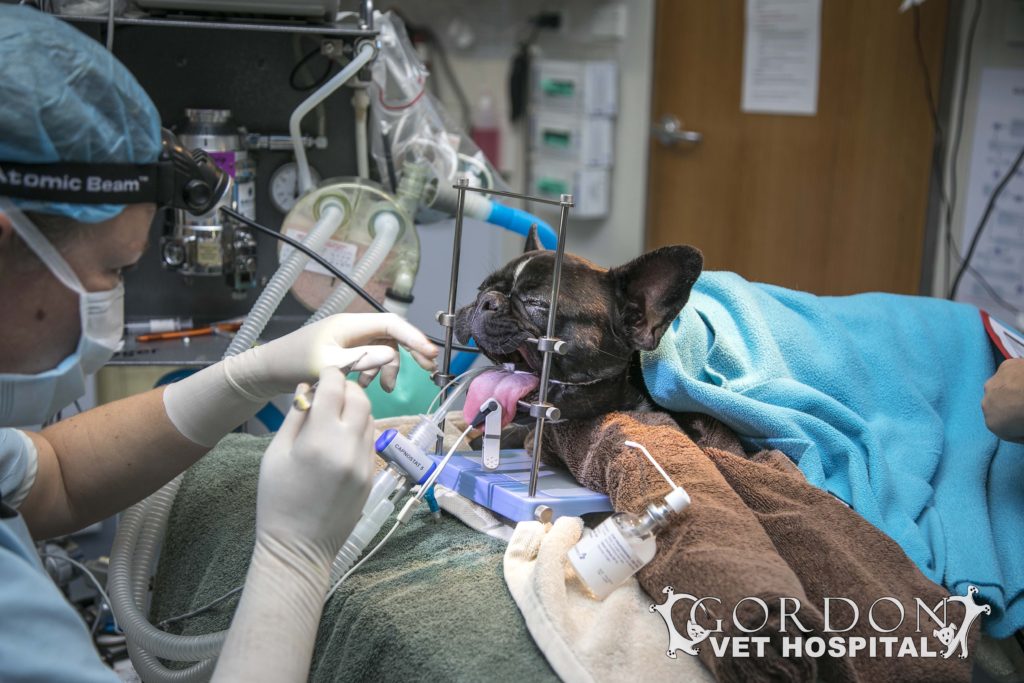
This type of breathing problem is very common for brachycephalic breeds, meaning breeds with broad heads and short noses like Pugs, Boxers, bulldogs, Shih Tzus, Chihuahuas, Chow Chows , Bull Mastiffs and so on.

Brachycephalic Airway Syndrome, or BAS, is a partial obstruction of the upper airway due to physical characteristics such as stenotic nares (narrowed nasal passages), an overly long soft palate, or collapse of the larynx.
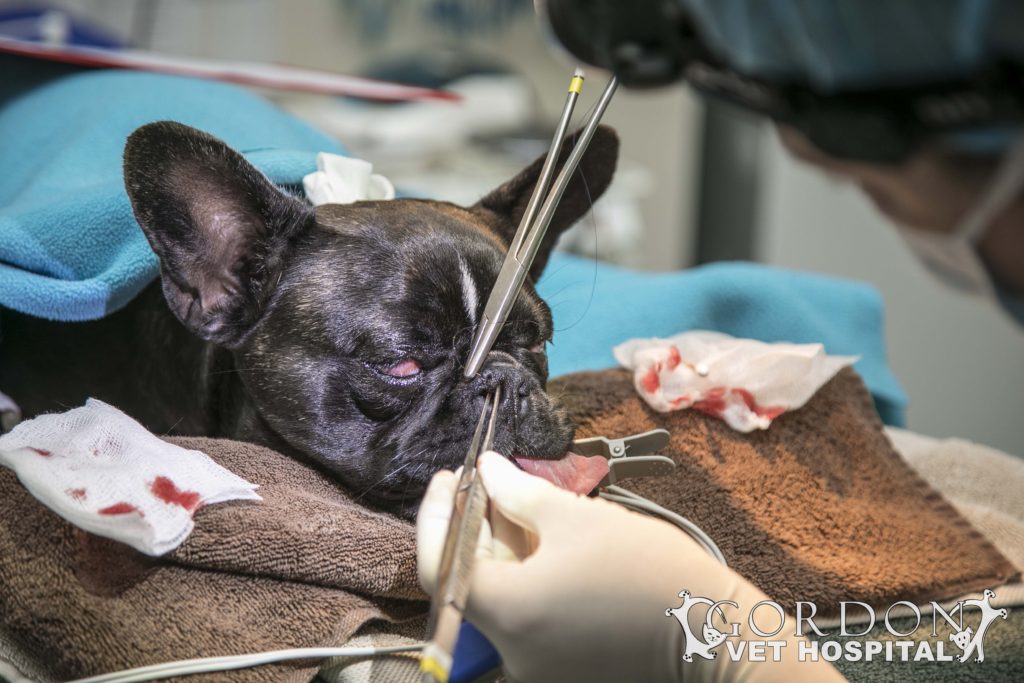
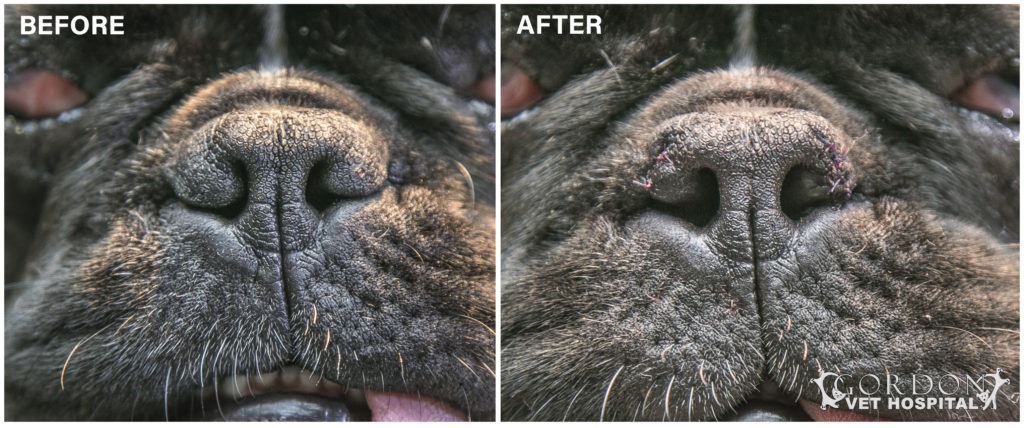
Ruby was booked in to undergo a procedure with Dr Helen to help relieve some of her symptoms. As Ruby often struggled to breath, she was pre-oxygenated for 15 minutes prior to being anesthetised and then again for 20 minutes after the surgery while vets and nurses monitored the oxygen levels in her blood. During the procedure, her long soft pallet was trimmed and her nostrils were opened up using a wedge resection. The surgery went off without a hitch wile half the hospital watched on.
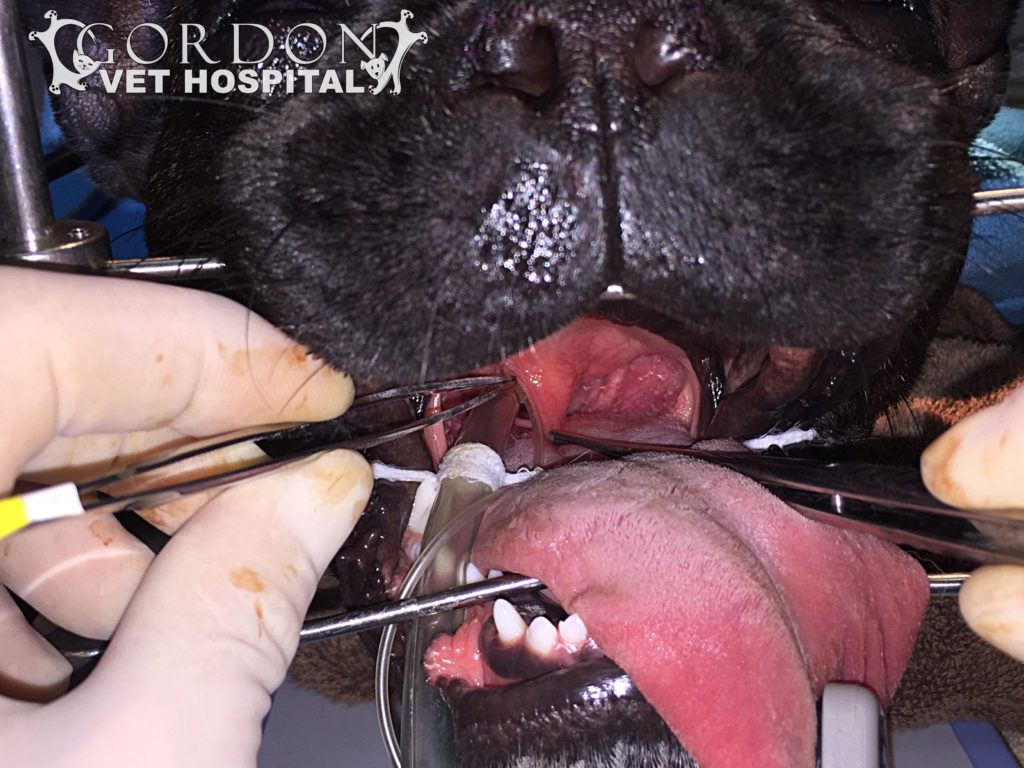
Ruby was up and about again only 30 minutes after the surgery and looking bright as ever, but she was transferred to NEVS overnight for observations just as a precaution. She will be eating soft food for the next two weeks, but should be able to get back to life as normal very soon.
